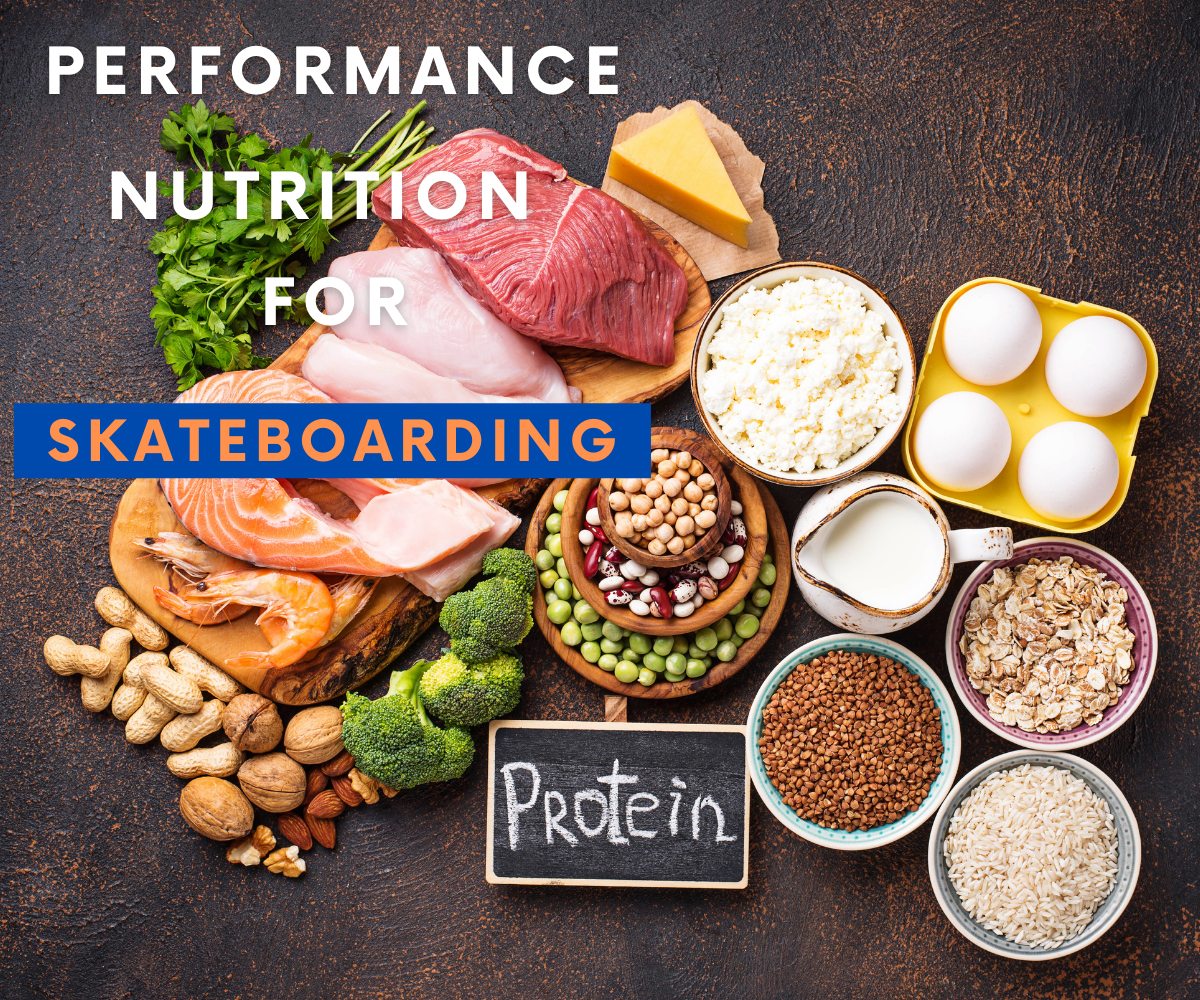It’s hard to discuss protein and not talk about muscle tissue, muscle function and its importance to skaters, yet most skaters don’t usually list it high on their priority list because they associate bigger muscles with oversized jocks trying to look good at the beach.
The truth is, good functioning muscle tissue is the ultimate boost in performance. We are not talking about muscle tissue to look good in a singlet, but rather the muscle tissue that’s going to help you;
- Take falls
- Decelerate your body weight when you bail
- Increase your stability on your board
- Increase your power on the board
- Make you more adept at handling speed and power
- Keep you safer from injuries
A common misconception in the skate community is that muscle growth only comes as a result of lifting weights in the gym, but the process of growing muscle tissue starts with the muscle receiving a stimulus via a force/resistance that it is not yet capable of dealing with. Impacts from skating, ollies, pushing and transitions are all great skate specific examples here.
When muscle fibres are damaged through these impacts often enough, the body responds by growing bigger muscle fibres. Muscle fibres that are more adept in dealing with the repeated exposure of forces skating places on them.
In the case of having adequate protein stores in the body that allow you to build and remodel this muscle tissue, you essentially unlock a new level of performance. You develop a greater tolerance level to the repeated exposure of these movements and forces specific to skating. This process is then repeated each and every time you aim to progress your skate game in power, height, distance , speed and even endurance. Without these protein stores, new muscle tissue cannot grow and ‘tight’ muscles constantly need to be released and be rehabilitated in order to deal with the daily grind that skating places on them.
Skating can throw a bit of a curveball in the works in terms of costly energy expenditure, especially with those longer sessions when you don’t want to turn in just yet. In those situations, when the body runs out of readily available energy stores, it can turn to another place to fuel itself; muscle protein. Given all the benefits we just listed around muscle tissue, this is the last thing you want to happen and the reason why energy expenditure headed up this series as the number 1 priority in performance. This is also why protein sits at number 2: Having an abundance of protein stored in the system will delay this catabolising (breaking down) of muscle tissue as the body goes in search of amino acids to fuel itself and allow you to hold on to your hard earned muscle tissue.
“So, exactly how much protein do I need?”
The recommended daily protein intake is calculated at 1.6-2.2g a day per kg of body weight. For example: I weigh 78kg x 2.0g (middle ground of recommended daily intake) = 156g of protein a day.
For those with experience tracking their nutrition you can track this in any of the free apps available. For most however, this will feel like an overly complicated solution so let me give you the easiest way:
The Palm method.
Use your palm to weigh out your portion size of protein with each meal, 3 times a day: This should get you quite close to your recommended daily intake, or at least in the ball park area.
Not Sure where to get your protein from? Just simply choose one of the examples below.
For added bonus you might also like to add a protein shake once a day as an extra insurance to ensure you are getting close to that protein target.
Once your protein stores are taken care of we can now look in to the good stuff. The tweaks to make to fuel your skate performance. Stay tuned for the next instalment.
For an easy to use guide with complete video demo’s on how to change nutrition for performance or weight loss be sure to join the Skateboard Strength App. When you join we give you a 100PG PDF aimed at arming you with all the knowledge you need to maximise skate performance including an entire nutrition section. Check it out 👊🏼

